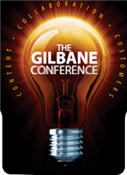
Mary Laplante from Gilbane Group moderated a discussion at the Gilbane Conference San Fransisco on the complexities and options for building and effectively managing multilingual sites with an emphasis on strategies for making local sites compelling and attractive to users based on local preferences.
Three panelists joined Laplante to share their case studies. First up was Gary Muddyman from Conversis, followed by Simon Lande of Magus, and wrapped up by Sultan Ghahtani from Sitecore.
How Are We Differentiating Ourselves?
Muddyman started the session by describing 5 areas that are key for organizations to succeed with their multilingual strategy:
- Effective Communication
- Knowledge Sharing between Groups
- Focus on the business needs
- Embrace Technology
- Purpose, Purpose, Purpose
He's amazed by the differences in how people use a site based on their location. Organizations need to focus on making sure that local sites are attractive and compelling locally, while still retaining control of the sites globally. Organizations also need to insure that they are attracting the right users and that when the user reaches the site that they get the feeling that the site understands them.
iStockPhoto
Muddyman's case study focused on his company's work with iStockPhoto. They are a leader in crowd-sourcing, which worked great for them in the creative space for their core business of providing a marketplace for image assets, but crowd-sourcing their translation efforts weren't as successful initially. When they started the translation effort in 2006 the bulk of their sales were in North America, though it was clear that there was wide international interest. The key for a successful localization strategy was to understand the users and the core needs of the site:
- Users ("iStockers") had a strong global identity that transcended the local in some ways
- They are creative and informal
- Focus on the photos, translations should be bite-sized, with few words
- Needed a strong focus on Search and Search Categorization terms
- Translators and translation guidelines needs to match the audience
- Especially with Search categorization there's not always a direct 1-to-1 term translation. Need to allow for local variations and how people search
iStockphoto saw large gains in revenue and international usage after the successful implementation of their multilingual translation effort.
The "Web Policy Silo" vs. Your Global Web Presence
Simon Lande of Magus began the second section with a discussion centered around effectively translating multilingual policies into actual results on websites. The issue, he says, is how we connect the "Web Policy Silo" of corporate strategies, policies, and roles and responsibilities with the actual global web presence. Matching the two is what he calls "Connected Governance." To achieve this you need the following:
- Visibility
- Communication between policy makers and content providers
- You need to get buy in from all parties
Unilever
Lande used Unilever as an example. They are a complex mix of global brands, they have hundreds of sites in 22 languages. All their sites adhere to the same core policies and all editors have the same guidelines, but the sites and results are managed locally. There are 5 spokes to the effective governance model for the sites:
- Accountability
- Content Quality
- Compliance Monitoring
- Cross-site Benchmarking and Measuring
- Training and Support
WCM Best Practices for Multilingual Sites
Sultan Ghahtani from Sitecore concluded the session with a set of WCM best practices for effective multilingual sites:
- Put control of the language in local hands, but have the global organization control the site structure
- Remove policies that make it difficult to create content
- Structure sites to scale globally. Architect the site without embedded local languages in structure or images
- Coordinate control creation across all markets to limit the translation lag
- Implement language and version control and plug into services like Clay Tablet to help facilitate translation
